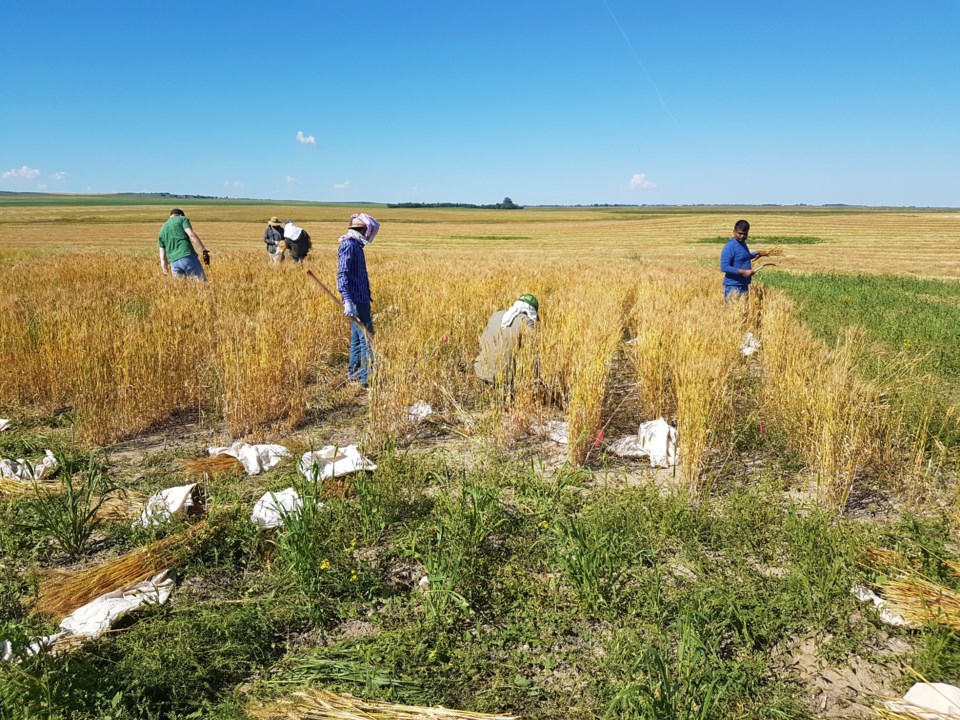University of Saskatchewan soil scientist Dr. Jeff Schoenau and a team of colleagues have recently published a soil study conducted in the province that could change fertilizer techniques and increase crop yields for prairie producers.
The ground-breaking new research, conducted using the Canadian Light Source synchrotron at the U of S, analyzed the reaction that fertilizers undergo once they hit the soil, and how effective current techniques are in retaining nutrients and micronutrients for plants to use.
“It really allows us to better understand how the conditions of the soil and is properties are going to influence the behaviour of fertilizer, which then leads to developments for optimal recommendations,” said Schoenau.
Working alongside soil chemist Dr. Derek Peak, Dr. Ryan Hangs and Ph.D student Noabur Rahman for over 10 years, Schoenau’s team used the synchrotron to analyze soil samples from across the Prairies — including some from his own farmland near Central Butte, Sask.
The study looked to determine what fertilizer types result in the most nutrients and micronutrients remaining available in soil, especially in soluble forms that can be used by plants, and how the application could be affecting those results.
Researchers were looking for the retention results of several nutrients, like phosphorus, sulphur, copper and zinc, as well as micronutrients as far down as the molecular level.
“We want to get as much of that fertilizer taken up by the plant and used, as that’s what gives the yield benefit to the grower,” said Schoenau.
 The research team actually tested specific fertilizing techniques to create their own samples for micronutrient analysis at the Canadian Light Source a the University of Saskatchewan. (supplied)
The research team actually tested specific fertilizing techniques to create their own samples for micronutrient analysis at the Canadian Light Source a the University of Saskatchewan. (supplied)Improving the efficiency of fertilizer has a multitude of benefits for producers, he continued beginning with the economic boost from improving crop yield by increasing nutrient intake.
Maximizing yield using effective fertilizer management is also more cost-efficient for producers and can lessen adverse environmental impacts from fertilizer use.
“(It can) also reduce potential losses of that fertilizer escaping somewhere else in the environment, like water or air where it can pose a concern,” said Schoenau. “So there’s an agronomic, economic and environmental benefit to getting that nutrient to the plant to use — to use those nutrients, don’t lose them.”
Using a synchrotron in research like this is unusual in the field right now, said Schoenau, and one of the reasons the study is so unique. The other element was the in-field testing the team did, trying out different fertilizer techniques on ground samples they would then test using the synchrotron.
“It was kind of going from field-scale type research all the way to the molecular scale, where we were looking at the absorption of x-ray light and how that interacted with different elements,” said Schoenau. “And when we started out, there were very few people who had ever done that.”
The team concluded their research with a recommendation for banding fertilizer as a technique that increases nutrient availability, especially of copper and zinc in carbonate-rich soils.
The study also offers other advice for best management practices for producers, which Schoenau said will help tailor their fertilizer approach into its most optimal form.
“It’s part of precision fertilizer management,” said Schoenau. “It’s like another tool in the toolbox, for a better understanding of how fertilizers work [and] we concluded that a combination of the traditional chemical methods, extraction methods we’ve used all along plus new spectroscopic methods like the synchrotron really gives us the best insight to what’s happening with fertilizer.”




